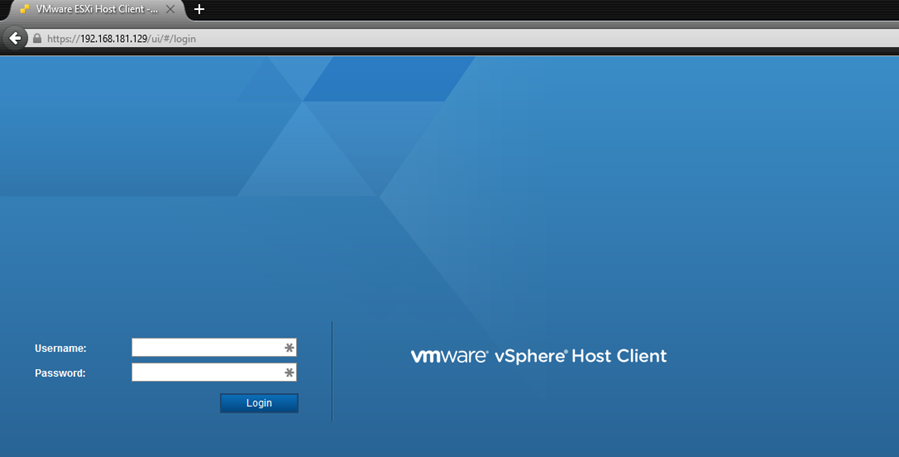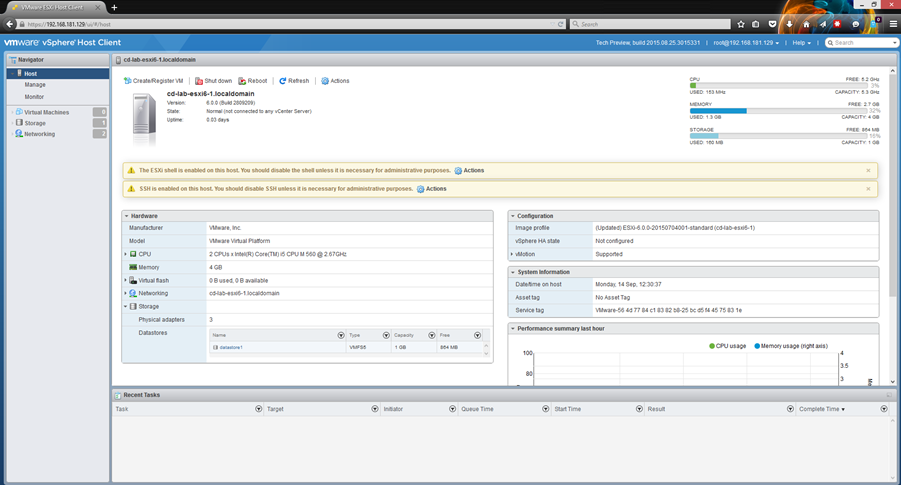If you’re a VMware admin, then you should already know about the excellent Flings from VMware, https://labs.vmware.com
For those not in the know, Flings are side projects that VMware engineers work on in their spare time, and offer out to users for feedback etc.
One of the recent VMware Fling releases was the ‘ESXi Embedded Host Client’ https://labs.vmware.com/flings/esxi-embedded-host-client
This Fling provides an HTML interface to allow you to control your ESXi host without the need for the viclient. The Fling is installed onto the host directly.
Installation
The installation files are contained within a VIB (vSphere Installation Bundle https://blogs.vmware.com/vsphere/2011/09/whats-in-a-vib.html).
If your host has internet connectivity, the VIB can be installed directly from your host console using the esxcli command
esxcli software vib install -v <URL>


Alternatively you can download the VIB to your local machine and copy the VIB via SCP to the host, and then run the installation command:-
esxcli software vib install -v /tmp/esxui.vib
Management
Once installed you can access the management interface via https://<hostIP>/ui from your browser.

Login using your host credentials

From here you can carry out pretty much any task you could normally do with the viclient :-
- VM operations (Power on, off, reset, suspend, etc).
- Creating a new VM, from scratch or from OVF/OVA (limited OVA support)
- Configuring NTP on a host
- Displaying summaries, events, tasks and notifications/alerts
- Providing a console to VMs
- Configuring host networking
- Configuring host advanced settings
-
Configuring host services
Removing VIB
To remove the VIB, use the following syntax
esxcli software vib remove -n esx-ui
Thoughts
This is a really nice and useful utility, which makes managing a standalone host all the better in my opinion. There are 1-2 limitations around storage management, but I’m sure this functionality will be added in the future.
It’s easy to see this the direction VMware should be taking with future management tools, and hopefully it’s only a matter of time before we see this fully integrated into the vSphere suite.